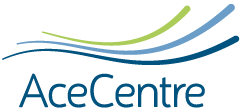Communication aids help people to communicate more effectively with those around them. Some communication aids involve sophisticated software and hardware, but not all. A simple alphabet chart on a piece of paper can be a really powerful communication tool! For most people it’s not an either/or situation and they will use a range of different communication aids depending upon the situation.
So what sorts of things are out there? The simple answer is lots! The information below just begins to scratch the surface. This is why having a service like Ace Centre involved is invaluable. We can support with identifying the right communication aid for the individual and provide ongoing support.
